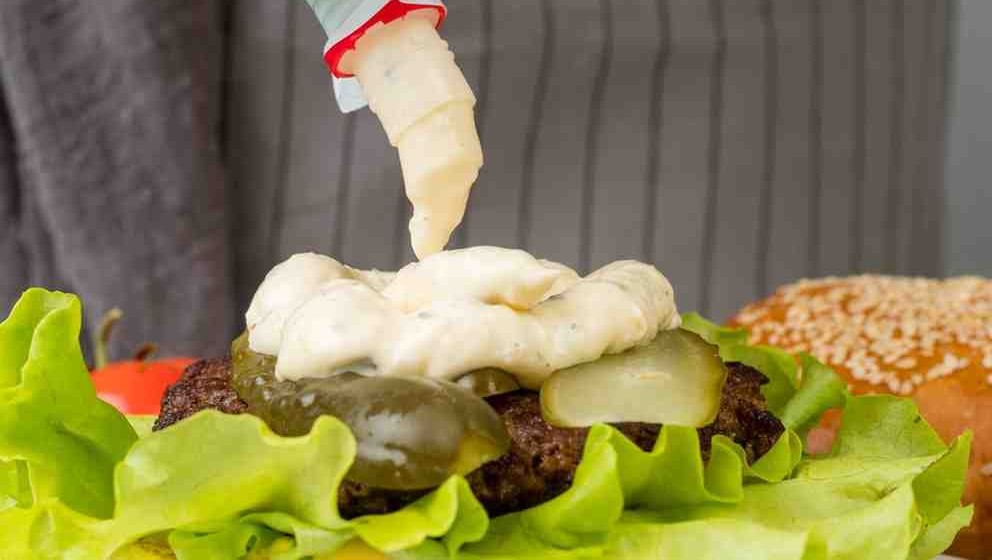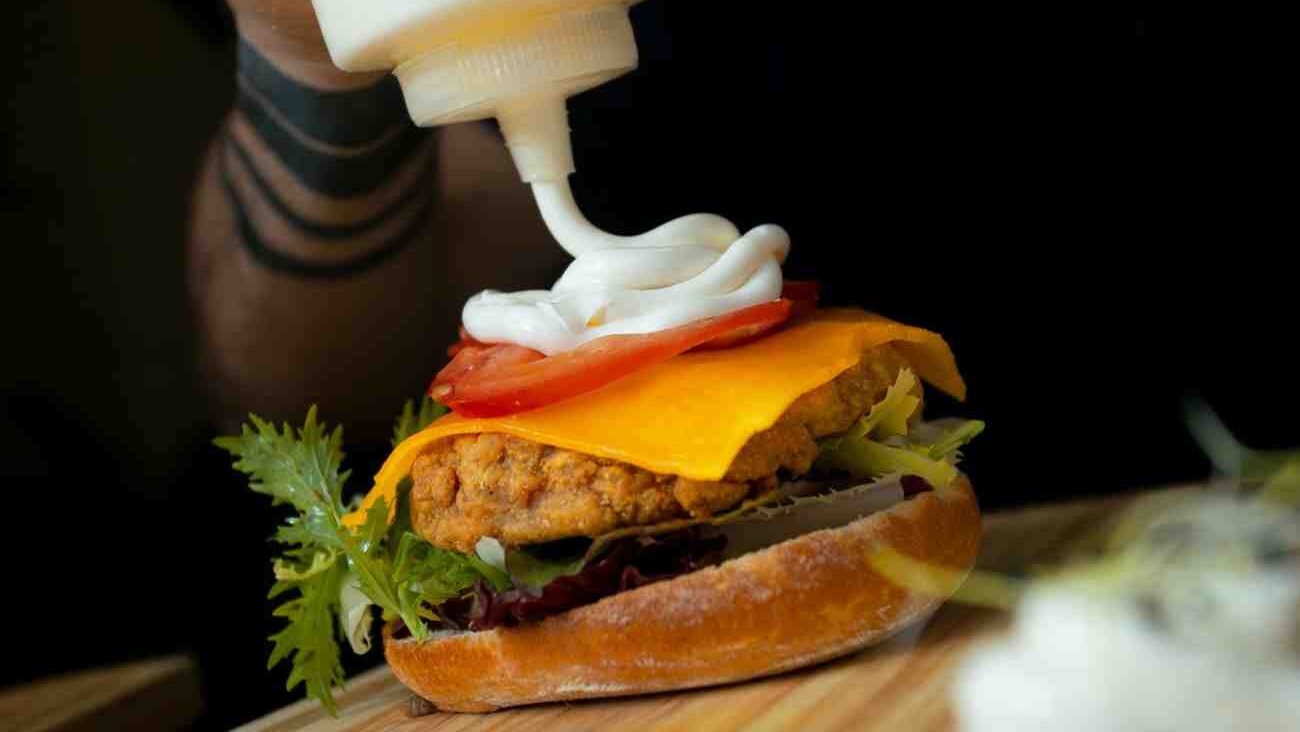Mayonnaise is not just a condiment; it’s a versatile and essential component of countless recipes. Understanding its history, science, and preparation techniques can help you make mayonnaise that is fresher, tastier, and more adaptable than store-bought options.
A Brief History of Mayonnaise
Mayonnaise has an interesting history that intertwines with European culinary traditions. While its precise origins remain debated, its development is often attributed to the mid-18th century.
The Origins of Mayonnaise
- French Connection: One popular story credits its creation to the French Duke of Richelieu in 1756 after the victory at Port Mahon, giving rise to the name “Mahonnaise.”
- Spanish Influence: Some believe it stems from the Spanish aioli, a similar emulsion of garlic, olive oil, and egg.
- Global Spread: Over time, the recipe evolved and gained global popularity, inspiring variations such as Japanese mayonnaise and American-style mayo.
The Science of Mayonnaise
To master mayonnaise, you need to understand the science behind emulsification. This knowledge ensures your mayonnaise is smooth, creamy, and stable.
How Emulsification Works
Mayonnaise is an emulsion, a stable mixture of oil and water. Egg yolks play a crucial role in binding these two elements.
- Egg Yolks as Emulsifiers: The lecithin in yolks enables oil and water to combine, forming a smooth mixture.
- Gradual Oil Addition: Adding oil slowly creates a stable emulsion. Pouring too much oil too quickly can cause the mixture to separate.
- The Role of Acids: Ingredients like vinegar or lemon juice add flavor and stabilize the mixture.

Essential Tools for Making Mayonnaise
Using the right tools can make the process easier and more efficient.
Must-Have Tools
- Whisk: Best for small batches and complete control. It also provides a traditional hands-on approach.
- Immersion Blender: Ideal for quick and reliable results, especially for beginners.
- Food Processor: Great for creating larger quantities with consistent quality.
Optional Additions
- Measuring Cups and Spoons: These ensure precise ingredient quantities for consistent flavor.
- Non-Slip Mixing Bowl: Keeps the bowl steady while whisking or blending.
Classic Mayonnaise Recipe
Ingredients
- 2 large egg yolks
- 1 teaspoon Dijon mustard (optional)
- 1 tablespoon lemon juice or vinegar
- 1 cup neutral oil (canola or grapeseed)
- A pinch of salt
Step-by-Step Instructions
Step 1: Prepare Your Ingredients
First, gather all ingredients and ensure they are at room temperature. Room temperature ingredients mix better, reducing the risk of separation. Separate the yolks and place them in a bowl or blender.
Step 2: Begin the Emulsion
Next, add mustard, salt, and a splash of vinegar or lemon juice to the yolks. Start whisking or blending the mixture until it thickens slightly.
Step 3: Add Oil Gradually
While whisking or blending continuously, drizzle the oil in a slow, steady stream. Keep an eye on the texture as the mixture thickens and becomes creamy.
Step 4: Adjust the Flavor
Once the emulsion forms, taste your mayonnaise. Adjust seasoning with more acid, salt, or mustard to suit your preferences.
Step 5: Store Properly
Finally, transfer the mayonnaise to an airtight container. Store it in the refrigerator and use it within 3–5 days for the best flavor and freshness.
Pro Tips for Making Perfect Mayonnaise
Preventing a Broken Emulsion
Creating a stable emulsion requires attention to detail. Adding oil too quickly is a common mistake that causes separation. If the mixture breaks, don’t panic. Rebind it by whisking in a teaspoon of water or another egg yolk.
Enhancing the Flavor
Mayonnaise is highly customizable. Experiment with different acids, such as lime juice or apple cider vinegar, for unique flavors. Adding herbs, garlic, or spices like paprika can also elevate the taste and make it more versatile.

Why Homemade Mayonnaise is Better
Making mayonnaise at home offers significant advantages over store-bought varieties.
Superior Taste
Fresh ingredients and customizable flavors make homemade mayonnaise far tastier. You can adjust the oil type, acid level, and seasonings to suit your preferences.
Healthier Option
Homemade mayonnaise contains no preservatives or artificial stabilizers. Choosing healthier oils, such as olive or avocado oil, can also improve its nutritional profile.
Myths About Mayonnaise
Mayonnaise often comes with myths that can intimidate new cooks. However, these misconceptions are easy to dispel.
“It’s Too Difficult to Make”
Actually, making mayonnaise is straightforward with the right tools and technique. Patience and steady oil addition are the keys to success.
“Only Olive Oil Works”
While olive oil adds a bold flavor, neutral oils like canola, sunflower, or grapeseed create a more versatile base for various recipes.
Customizing Mayonnaise: Transforming Flavors to Suit Every Dish
Homemade mayonnaise is not only versatile but also incredibly adaptable to different cuisines and dishes. By making small adjustments, you can create unique flavor profiles that elevate your meals.
Classic Additions for Flavor Boosts
If you want to enhance your mayonnaise’s flavor, a few classic ingredients can make a significant difference:
- Mustard: Adding Dijon or whole-grain mustard gives a tangy edge and also helps stabilize the emulsion.
- Garlic: For a savory twist, mix in raw minced garlic or roasted garlic paste. This is perfect for creating aioli.
- Herbs: Including fresh herbs like parsley, dill, or tarragon provides a refreshing, earthy flavor that complements seafood and salads.
Creative Twists for Global Inspiration
Taking inspiration from global cuisines can turn your mayonnaise into something extraordinary. For example:
- Spicy Variations: Add chili oil, sriracha, or a pinch of cayenne pepper for a bold, fiery flavor. This works well in sandwiches and dips.
- Citrus Infusions: Replace vinegar with lime or orange juice for a zesty touch that pairs perfectly with grilled seafood.
- Umami Enhancers: Incorporate miso paste, soy sauce, or anchovy paste to add depth and complexity, making the mayo an excellent base for dressings.
Troubleshooting: Solving Common Mayonnaise Problems
Even seasoned cooks encounter challenges when making mayonnaise. Thankfully, these issues are easy to fix with a few simple steps.
Why Mayonnaise Won’t Thicken
When mayonnaise doesn’t thicken, the problem is often caused by incorrect ingredient temperatures or an oil addition that’s too fast.
- Solution: Always ensure your ingredients are at room temperature. Additionally, start over with a fresh egg yolk, and slowly whisk in the runny mixture to rescue the emulsion.
Fixing a Broken Emulsion
Sometimes, the mixture separates, leaving oil floating on top. This can be frustrating, but it’s a common issue.
- Solution: To fix this, whisk a teaspoon of water or another egg yolk in a clean bowl. Gradually add the broken mixture while whisking continuously.
Bitter or Off-Flavors
If your mayonnaise tastes bitter or unpleasant, the culprit may be the type of oil used.
- Solution: Opt for neutral oils like canola or grapeseed. Avoid over-processing extra virgin olive oil, as it can release bitter compounds during emulsification.
Advanced Techniques for Perfect Mayonnaise
Once you’ve mastered the basics, you can experiment with advanced methods to streamline the process and achieve consistent results.
Using an Immersion Blender
An immersion blender is one of the easiest tools for making mayonnaise.
- Place all the ingredients in a tall, narrow container.
- Submerge the blender completely before turning it on to prevent splattering.
- Blend from the bottom up for an even and smooth consistency.
Food Processor Tips
For larger batches, a food processor is highly effective.
- Add the egg yolk, acid, and seasoning to the bowl first.
- Slowly drizzle the oil through the feed tube while the processor is running.
- This ensures the emulsion forms evenly and the texture remains creamy.
Global Variations of Mayonnaise
Mayonnaise has been embraced worldwide, with cultures adapting it to suit local tastes. Here are some popular global versions:
Japanese Mayonnaise
Japanese mayonnaise, often sold under the Kewpie brand, is sweeter and tangier than Western varieties.
- Key Ingredients: Rice vinegar and a hint of MSG contribute to its distinct flavor.
- Best Pairings: It’s a popular addition to sushi, fried chicken, and savory pancakes like okonomiyaki.
Spanish Allioli
Allioli, a precursor to modern mayonnaise, is a Spanish favorite.
- Key Ingredients: Made with just garlic and olive oil, though contemporary recipes often include egg yolks for ease.
- Best Pairings: It’s perfect with grilled meats, seafood, and roasted vegetables.
Russian Dressing
Russian dressing is a mayonnaise-based condiment often used in sandwiches.
- Key Ingredients: A combination of mayonnaise, ketchup, paprika, and sometimes relish.
- Best Pairings: It pairs exceptionally well with Reuben sandwiches and hearty salads.
Indian Tadka Mayo
Indian-inspired mayonnaise infuses traditional spices for a bold flavor.
- Key Ingredients: Mustard seeds, curry leaves, and chili oil are mixed into the mayo.
- Best Pairings: It works beautifully with wraps, fried snacks, and even rice dishes.
Enhancing Everyday Meals with Mayonnaise
Mayonnaise is much more than a spread; it can transform everyday meals with minimal effort.
As a Cooking Ingredient
Mayonnaise serves as a multi-functional ingredient in cooking. For example:
- Marinades: Combine mayonnaise with garlic and herbs to tenderize and flavor meats.
- Baking Aid: Use mayonnaise in cake and bread recipes to add moisture and softness.
- Sauce Base: Blend it with soy sauce, honey, or hot sauce for quick and delicious dips.
As a Finishing Touch
Adding mayonnaise at the end of meal preparation can elevate the dish.
- Sandwich Spread: Mix in spices or condiments to create a unique sandwich spread.
- Salad Dressing: Thin mayonnaise with water or lemon juice for a creamy yet light dressing.
- Grilling Glaze: Apply mayonnaise as a base for marinades to achieve a golden, caramelized crust.
The Role of Mayonnaise in Professional Kitchens
Chefs rely on mayonnaise not only for its flavor but also for its utility in various dishes.
Quick Emulsions
In professional kitchens, chefs often use immersion blenders to create mayonnaise in seconds. This ensures smooth textures, even under time constraints.
Customized Sauces
Mayonnaise serves as a base for endless sauce variations. Chefs mix it with herbs, spices, or reductions to complement specific dishes, like seafood aiolis or spicy burger spreads.
Presentation Enhancements
Because of its creamy consistency, mayonnaise is often used for plating. For example, chefs might pipe or swirl it to add visual appeal to appetizers and main courses.
Storage Tips for Homemade Mayonnaise
Proper storage is essential to maintain freshness and safety.
Refrigeration Guidelines
- Always store mayonnaise in an airtight container to prevent contamination.
- Homemade mayonnaise has a shorter shelf life than commercial varieties and should be used within 3–5 days.
Avoid Freezing
Mayonnaise doesn’t freeze well because the emulsion breaks during the thawing process. This leaves a watery, unusable mixture.

